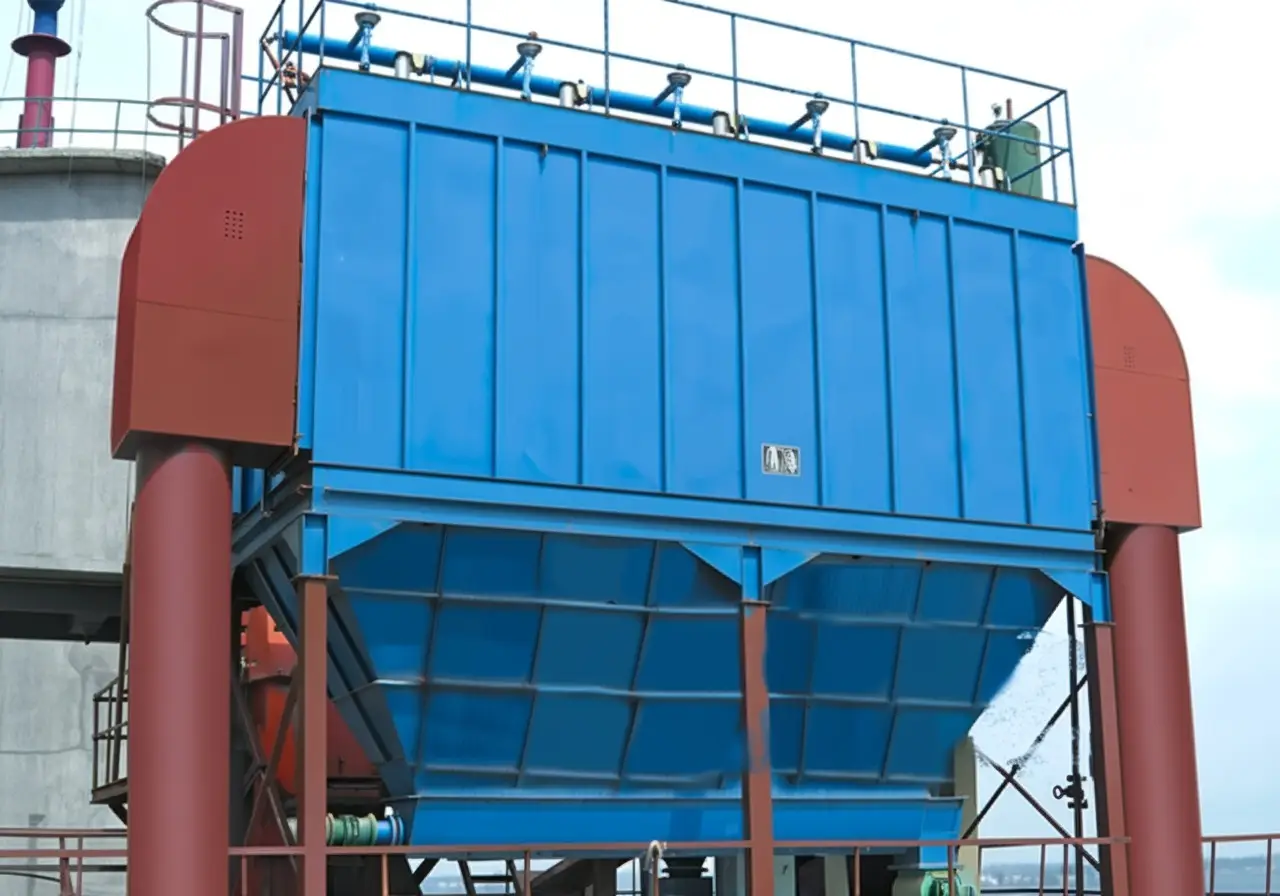Service
ESP Electrostatic Precipitator
In the world of industrial air pollution control, few technologies are as effective and widely used as the Electrostatic Precipitator (ESP). Also known as an electrostatic dust collector, this powerful device uses high-voltage electrical energy to remove dust, smoke, and other particulate matter from a gas stream.

ESP Electrostatic Precipitator
ESPs are a cornerstone of environmental protection in many heavy industries, including:
Power Generation
Metallurgy
Cement and Building Materials
Chemical Manufacturing
Compared to other dust collection systems, the electrostatic precipitator stands out for its remarkable dust removal efficiency and lower energy consumption, making it a preferred choice for large-scale operations.
How Do Electrostatic Precipitators Work? The Core Principle
An ESP separates dust from gas using the power of static electricity. The process relies on a powerful, high-voltage electric field. Here’s a step-by-step breakdown of how it works:
Creating an Electric Field: The system uses a high-voltage DC power supply to energize a series of discharge electrodes (cathodes) and collecting plate electrodes (anodes). This creates a powerful, non-uniform electric field between them.
Generating a Corona Discharge: When the voltage reaches a critical level, it causes the gas around the discharge electrodes to ionize. This phenomenon, known as a corona discharge, generates a cloud of free electrons and negative ions.
Charging the Dust Particles: As dusty flue gas passes through this electric field, the dust particles are bombarded by the electrons and negative ions, causing them to become negatively charged.
Collecting the Dust: Under the influence of the electric field force, these newly charged dust particles are pulled away from the gas stream and migrate toward the positively charged collecting plates (anodes).
Removing the Collected Dust: The particles accumulate on the plates, forming a layer of dust. At regular intervals, a rapping or vibration system shakes the plates, dislodging the collected dust, which then falls into a hopper below for disposal. This completes the separation process, allowing clean gas to exit the system.
Key Advantages of Using an Electrostatic Precipitator
ESPs offer several distinct benefits that make them ideal for demanding industrial environments.
Exceptional Dust Collection Efficiency
With a properly designed electric field, an ESP can achieve a dust collection efficiency of over 99%. For even higher performance, multiple electric fields can be installed in series. While efficiency may naturally decrease over several years due to electrode corrosion, the initial performance is outstanding.
Handles Large Air Volumes
The modular structure of an ESP makes it easy to scale up for massive operations. A single unit can be designed to handle flue gas volumes as high as 2,000,000 m³/h—a scale that is often impractical or uneconomical for bag filters or cyclone collectors.
Low Operating Costs and Energy Consumption
The primary energy usage in an ESP comes from the power supply, resistance loss, heating elements, and vibration motors. Thanks to its low-resistance design and the fact that it has few wearing parts to replace, the overall operating cost of an electrostatic precipitator is significantly lower than that of a bag filter.
Flexible and Robust Structural Design
The shell of an ESP is built with a high-strength frame, ensuring excellent stability. It can be custom-designed to withstand different pressures and temperatures. Furthermore, the air inlets and outlets can be configured in various forms to fit a specific process layout, offering valuable flexibility.
The Importance of the High-Voltage Power Supply
The efficiency of an ESP is heavily dependent on its power supply, which consists of a control box, a booster transformer, and a rectifier. To ensure optimal performance, the operating voltage must be maintained at a high level—typically between 40-75kV, and in some cases, even exceeding 100kV. This high voltage is essential for creating the strong corona effect needed to charge and capture dust particles effectively.
Choosing the Right ESP Solution
Electrostatic precipitators are a proven, reliable, and cost-effective technology for managing industrial air pollution. Their ability to deliver high efficiency on a massive scale makes them indispensable in modern industry.
When implementing this critical technology, partnering with a knowledgeable provider is key. Companies like DMPCR specialize in designing and supplying robust electrostatic precipitators tailored to specific industrial needs, ensuring you get the best performance and reliability for your air purification system.
